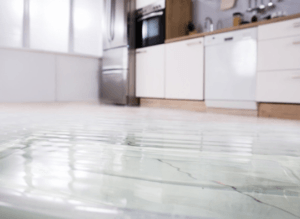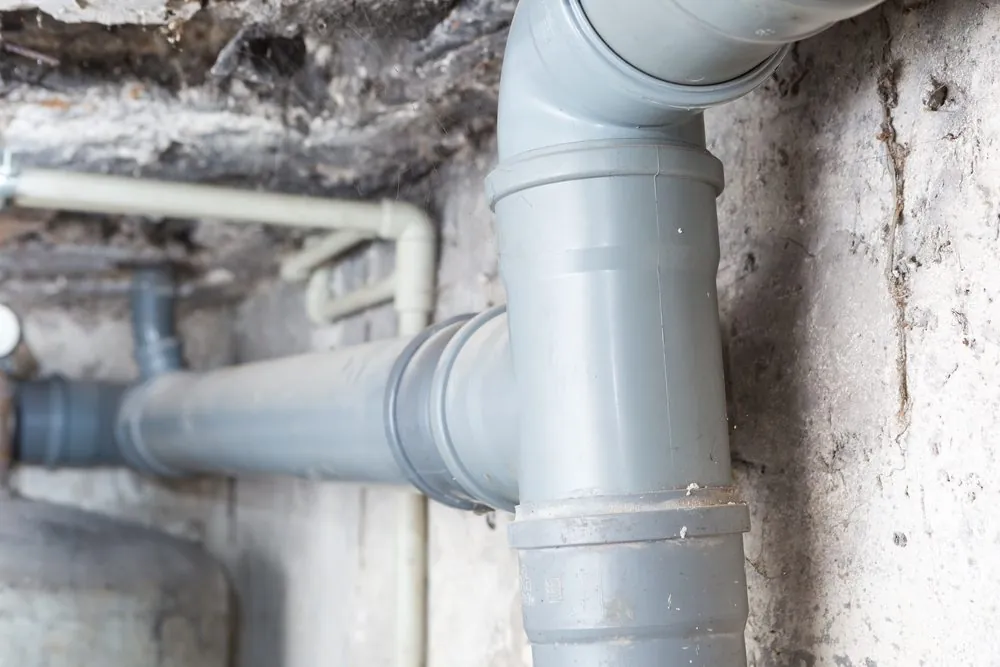Water damage to your home can be debilitating, disrupting your daily life and potentially costing you thousands of dollars in repairs. Whether it’s a leaking appliance, burst pipe, or storm-related flooding, knowing what steps to take after an incident, and how your water damage and insurance coverage work together can make all the difference in restoring your property safely and efficiently.
Here’s what you need to know to respond wisely and minimize further damage.
 Did You Know?
Did You Know?
About 2.2 out of every 100 households experience some form of water damage each year. Water can quickly damage your walls, floors, ceilings, cabinets, furniture, and personal belongings. Worse, it can create an ideal environment for mold and mildew, which can pose health risks and lead to costly remediation.
Dealing With Water Damage
Water damage emergencies can be overwhelming. But knowing what not to do is just as important as knowing the right steps to take. Here are key tips to help guide your response.
What Not To Do
When you’re dealing with water damage, it’s important to take extra safety precautions. Here are some things you should never do.
 Don’t Use a Household Vacuum Cleaner to Remove Water
Don’t Use a Household Vacuum Cleaner to Remove Water
Never attempt to use your regular household vacuum cleaner to extract water. These machines are not designed for water removal, and doing so can not only ruin the vacuum but also pose a serious electrical hazard. Household vacuums do not have water-sealed components, which means you could experience sparks, smoke, or electric shock.
Professionals like PuroClean Restoration Specialists use industrial-grade extraction equipment that’s designed for water emergencies and can remove moisture safely and thoroughly.
Never Operate Electrical Appliances While Standing on Wet Floors
Avoid using televisions, ceiling fans, computers, radios, or any plugged-in device when standing on a wet floor or carpet. The combination of moisture and electricity can lead to serious injury or even electrocution. Even if a device appears dry on the outside, moisture inside can still pose a danger.
Don’t Touch Electric Outlets or Plugs in Wet Areas
Stay away from outlets, cords, chargers, and power strips, especially if nearby walls or flooring are wet. Do not attempt to plug in or unplug any appliance or electronic device, and if the water level is high, avoid the area altogether until a professional has deemed it safe.
What To Do
Water damage can be a nightmare to deal with, but there are several things you can do to help the process. Here’s what you need to know.
Call a Professional
Water damage restoration is not a DIY project. It’s essential to contact a trained and certified professional immediately to assess the situation, stop further damage, and start the drying and restoration process.
Companies like PuroClean Restoration Specialists have the experience, equipment, and staff needed to safely remove water, dry affected areas, and prevent mold growth. Prompt action is also important for ensuring that your water damage and insurance claim is not delayed or denied.
Learn More: What is Emergency Restoration?
Turn Off the Water Supply
If the water damage is caused by a burst pipe or leaking appliance, turn off the main water valve immediately. This will stop the flow of water and prevent additional flooding. Knowing the location of your home’s water shut-off valve in advance can save you from major repairs—and make your water damage and insurance claim more manageable.
Once the water is turned off, contact a licensed plumber to assess and fix the source of the issue.
 Proceed With Caution in Affected Areas
Proceed With Caution in Affected Areas
Watch your step! Wet floors can be extremely slippery, and residual electricity in the space poses a serious risk. If it’s safe to access your breaker box without stepping in water, turn off the power to the affected area or, better yet, to the entire house.
Remove Excess Water if Possible
Use towels or mops to remove standing water. Open windows in cool weather or turn on the air conditioner in hot weather (if it’s safe to do so) to speed up drying. However, never use your regular vacuum for this task. If the water is deeper than a few inches or covers a large area, wait for the professionals.
Prop Up Furniture and Remove Loose Items
Get your furniture off the floor as much as possible. Use blocks or folded towels to lift couches, chairs, and tables to prevent soaking. Remove cushions and place them in a dry area. Any wet items, especially those made of wood or fabric, should be separated and dried out to avoid further damage.
Remove Area Rugs, Books, and Magazines
Pick up any rugs, books, or magazines from damp flooring. These items not only absorb moisture but can bleed ink or dye, causing additional staining or damage to flooring and carpet. Wait until all items are fully dry before returning them to their original locations.
Open and Dry Storage Containers
Open any bags, boxes, luggage, or containers that may have been exposed to water. If the items inside are salvageable, place them in direct sunlight or a dry, well-ventilated space to prevent mold or mildew. Discard anything that cannot be thoroughly dried or cleaned.
Protect Valuables and Important Documents
Move artwork, framed pictures, and delicate items to a safe, dry location. Store birth certificates, passports, insurance documents, and social security cards in a waterproof container or safe. These critical items are often overlooked in the rush and can be difficult to replace.
Want to Stay Ahead of the Problem? Learn More: 5 Tips to Prevent Water Damage in Your Home
Why Choose PuroClean Restoration Specialists
PuroClean Restoration Specialists are the trusted professionals to call when water, fire, or mold damage occurs in your home or business. We understand the stress that water damage can bring, and we’re committed to helping you recover quickly.
We don’t just remove water, we restore your peace of mind. If you’re facing an emergency and need help navigating water damage and insurance questions, we’re here for you.


